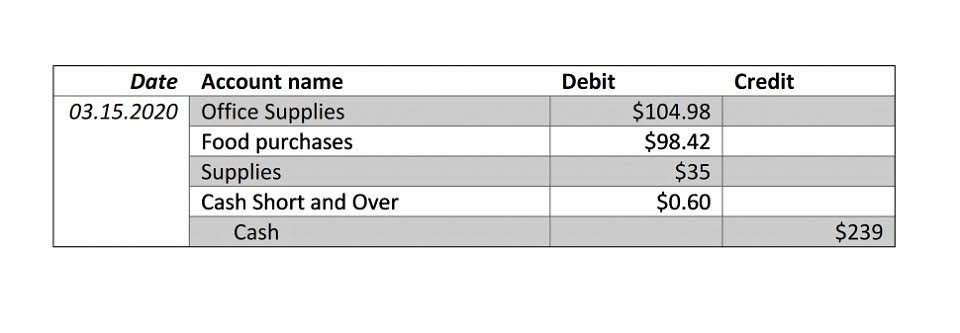
After closing all the books at the end of a financial year, every business starts its new books at the beginning of each year. Closing balances of all the accounts are carried forward to the new year as opening balances. As it is the first entry in the new financial year, it is called Opening Journal Entry. Any monetary benefit arising from the business can be termed as income. The Cash Account will be increased with the amount received as income, so it will be debited and Income Account will be credited.
Liabilities
Closing entries in accounting are used at the end of a reporting cycle to transfer balances from temporary accounts, like revenue and expenses, into permanent accounts. This process ensures the new accounting period starts with zero balances in temporary accounts, giving businesses a clean slate. Thus, the journal entry to record this transaction would show an increase to the expense account (debit) and a decrease in accumulated depreciation (credit). General journal entries record all raw transactions in chronological order. They act as the reference for the general ledger, which posts transactions into sub-ledgers representing the different account types listed in your chart of accounts. General journals provide an easy format for recording transactions, while general ledgers provide an easy representation of the flow of money across accounts.
Example 2: Accounts Receivable Journal Entry
You don’t need to include every detail, just the parts that were significant to you. Start each entry with the date and, if relevant, the location. This helps to contextualize your entries and can be interesting when you look back at them later.
Income Statement
Once you have decided the invoice is uncollectible, you need to do the actual write-off. If you are using QuickBooks®, entry example record this transaction through Pay Bills in the Vendor section of the flow chart or the drop down menu. Or just hand-write them out using this lined journal paper template.
Prepaid Insurance:

Asset accounts include cash, goodwill, accounts receivable, inventory, land, and equipment. To master the debits and credits rules, you first need to know the five main account types in accounting. This table is your new best friend – it shows how debits (Dr) and credits (Cr) affect each one. Any transaction that doesn’t fit into one of these specialized books gets recorded in the general ledger.
- This practice serves as a reflective activity, allowing one to document daily events, explore emotions, and articulate goals.
- Every entry contains an equal debit and credit along with the names of the accounts, description of the transaction, and date of the business event.
- The software will show you a preview of the debit and credit entries.
- Remember that journal entries don’t require perfection—they simply ask for presence and honesty.
- They need complete, up-to-date details on all incoming and outgoing payments to prepare financial statements and make informed decisions.
You’ll notice the above diagram shows the first step as “Source Documents”. Obviously, in this tutorial, we won’t be asking you to go out and collect invoices and receipts, so we’ll conveniently “skip” that step for now. As the equipment ages and loses value, you have to record its depreciation.
- Using the examples provided, try creating and analyzing your own journal entries so you can get comfortable with them.
- This article explores various types of journal entry examples to enhance your writing practice, from daily reflections to creative expressions.
- Understanding how to record transactions properly ensures that businesses maintain accurate financial records and make informed decisions.
- Journal entries can be any length—from a single sentence to multiple pages.
- Assets are all the shiny objects and valuable resources a company owns that are supposed to bring in money.
- This transaction is recorded as a prepayment until the expenses are incurred.
- If you use QuickBooks and want to write off a specific account (as opposed to booking a journal entry), here is the best way to do it.

It’s a way to keep all the money stories organized in one place. Journal entries stand at the core of financial accounting, ensuring every transaction is accurately chronicled, and the financial position of an entity is transparently depicted. I also show you how to record the journal entry as well as explain the economic impact of each transaction on the accounting equation. Most of these journal entry examples are Outsource Invoicing also in parts of the accounting course.

The process of recording transactions in the journal is called Journalising and recorded transactions are called Journal Entries. Understanding closing entries accounting from the start helps beginners see how financial cycles operate. It emphasizes the link between short-term activities (like https://www.kairosmoorehaven.com/examples-of-long-term-liabilities-and-their/ monthly expenses) and long-term reporting (like retained earnings), making the entire accounting process more intuitive. Recording journal entries correctly is crucial for accurate financial reporting and other finance and accounting functions. However, staying up-to-date on journal entries can be a challenge, especially if you’re in the growth stage and focused on scaling up your business with limited resources. One common mistake is to put off recording journal entries during busy periods.
- So you may want to check back regularly as I may not put in on the RSS Feed every time I make an addition …
- The allowance is just an estimate of the accounts receivable that may not be collectible.
- We analyzed this transaction to increase utilities expense and decrease cash since we paid cash.
- Adjusting entries for deferred expenses track services rendered or products received after making payments in advance.
- These entries help make sure the financial statements reflect the real situation, like adjusting for bad debt or recording depreciation on equipment.
Income
Think of them as the official logbook for every single financial transaction a company makes. They are the absolute foundation of the double-entry accounting system, a method that’s been keeping financial records straight for centuries. Every single day, businesses are swimming in a sea of transactions.
Financial Management: Meaning, Types and Key Differences
The journal entries for equipment change depending on whether you’re buying it, depreciating it, or selling it. Cash is the lifeblood of a company, used for everything from buying assets and paying off debts to funding the monthly pizza party. It’s the most liquid asset, and often the one that disappears the fastest. Assets are all the shiny objects and valuable resources a company owns that are supposed to bring in money.
